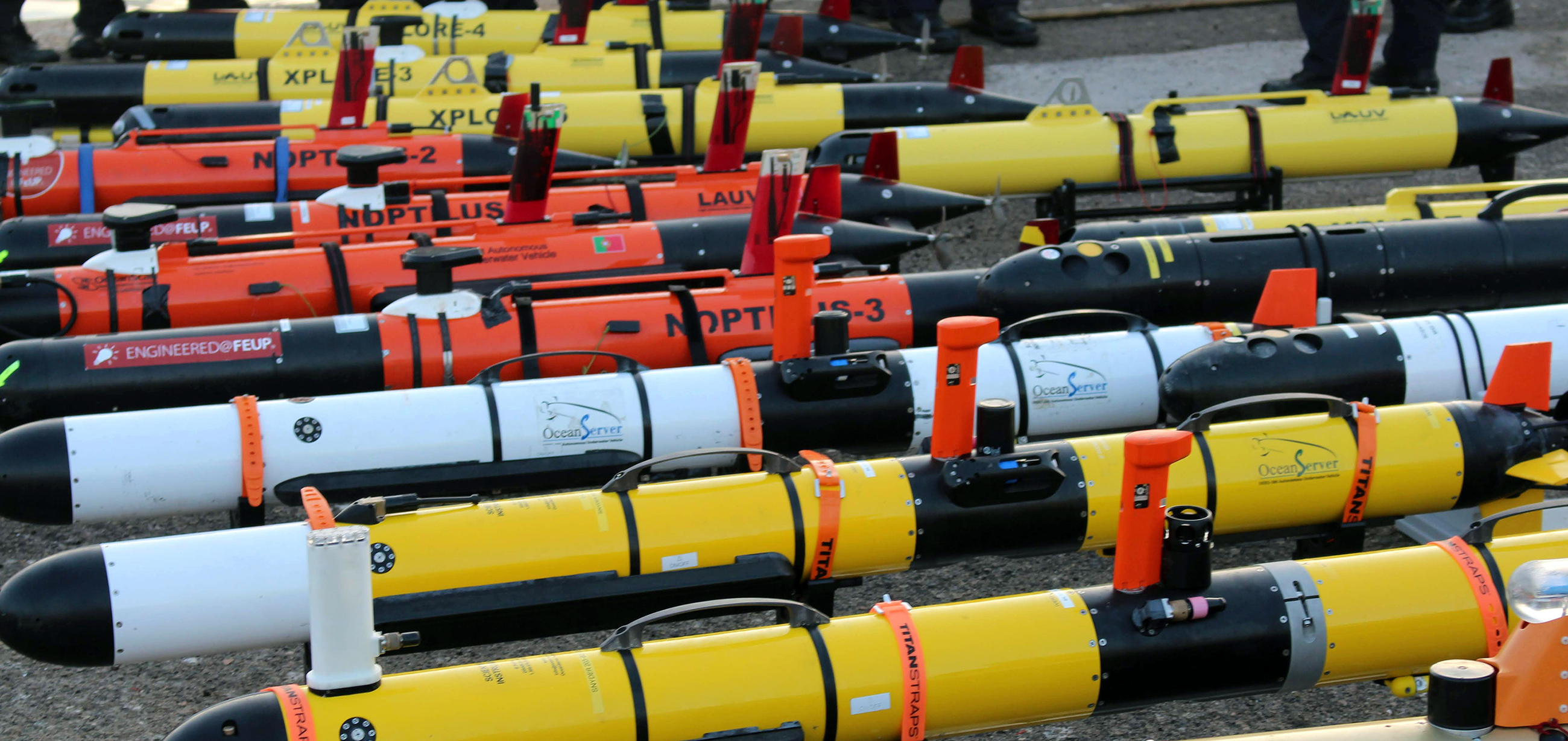The “Recognized Environmental Picture Atlantic” Exercise (REP) is returning for its 10th edition, with Sesimbra and Troia Peninsula as the backdrop this year. Bringing together dozens of autonomous underwater, surface and air vehicles for coastal operations, the annual event will soon take place again, this time from 11th to 27th September 2019. REP is one of the major European experimentation exercises for Maritime Unmanned Systems (MUS) and is jointly organized by the Portuguese Navy, the Laboratório de Sistemas e Tecnologia Subaquática (LSTS) of the University of Porto and the NATO STO Centre for Maritime Research and Experimentation.
This year’s edition is held under the NATO’s Maritime Unmanned Systems Initiative and brings the exercise to new levels of participation, institutional support, and complexity. In fact, it is expected to be highly attended, with dozens of Navy Forces from across the globe being represented at REP19 and contributing multiple assets to the operational demonstration.
Ever since its first edition in 2010, REP is targeted at advancing the state of art in networked vehicle systems through large-scale experimentation and cooperation involving Academia, Industry and the Operational Community. During the 2-week exercise, the participants will be working together to develop and evaluate operational concepts and to test new technological advances, procedures and tactics for MUS in real-life operational scenarios. The primary goals this year are to consolidate the organizational model, to strengthen existing cooperation, to establish new avenues for cooperation, and to bring the state of the art in networked vehicle systems closer to operations
As for LSTS-FEUP, there are at least 10 major actions that the team plans to accomplish: 3 are related to the demonstration of LSTS technology in the scope of maritime situational awareness, ocean sampling and outflow characterization of Sado River, 5 are specifically meant for operational activity in cooperation with different entities – such as the Portuguese Navy submarine Squadron, NATO Centre for Maritime Research and Experimentation, Evologics GmbH and University of Vigo, and 2 refer to the demonstration resulting from R&D activities under EUMR H2020 project and the joint research from the Naval Undersea Warfare Center Division Newport (NUWC), the University of Hawaii Applied Research Lab and College of Engineering (UH ARL) and LSTS-FEUP.
The whole action is carried out according to specific mission plans, designed to meet the requirements of each operational scenario, and the expected outcomes concern the technological and scientific fields, but also the Security and Defence sector.

Vision
The REP exercise builds on the vision set forward ten years ago to advance the state of art in networked vehicle systems through large-scale experimentation and cooperation involving Academia, Industry and the Operational Community.
The 10th edition of REP brings the exercise to new levels of participation, institutional support, and complexity. The goals for this year’s edition are to consolidate the organizational model, to strengthen existing cooperation, to establish new avenues for cooperation, and to bring the state of the art in networked vehicle systems closer to operations.
The LSTS-FEUP team has a set of very ambitious objectives for REP(MUS)19:
- Demonstration of the new capabilities of the web-based tool Ripples for maritime situational awareness and tasking of multi-domain unmanned vehicles. Ripples enables the ingestion of remote sensing data, of data collected in real-time, as well as of outputs of oceanographic models, to support advanced planning and execution control capabilities.
- Ocean sampling with long endurance Light Autonomous Underwater Vehicles (LAUV) remotely supervised, with minimal human intervention, for over 3 days from a shore-based control center.
- Characterization of the outflow of the Sado River to be performed cooperatively by multiple Autonomous Underwater Vehicles (LAUVs) and Unmanned Air Systems. This will be done in cooperation with the Universities of Aveiro and Lisbon.
- Integration in cooperative mine-warfare missions to be performed by Autonomous Underwater Vehicles from several nations.
- Characterization of acoustic and magnetic signatures of the LAUVs in the open ocean. This will be done in cooperation with the Portuguese Navy submarine Squadron.
- Demonstration of response to Emergency Distress call for submarine operations. This will be done in cooperation with the Portuguese Navy submarine Squadron and the NATO Centre for Maritime Research and Experimentation.
- Demonstration of underwater acoustic networking communications with fixed and mobile nodes. This will be done in cooperation with Evologics GmbH.
- Demonstration of radio communication exchanges between the LUME small satellite and Unmanned Air Systems. This will done in cooperation with the University of Vigo, tasked with the operation of the satellite.
- Demonstration of multi-robot area coverage under varying currents. This objective will be accomplished in the context of the EUMR H2020 project.
- Demonstration of the Cross-Domain (UxS) Command, Control, and Communications (CDC3) the development and demonstration project undertaken by the the Naval Undersea Warfare Center Division Newport (NUWC), the University of Hawaii Applied Research Lab and College of Engineering (UH ARL) and LSTS-FEUP. This demonstration has several objectives:
- Adoption of standard architectures and services for C3 applications with extensions to proprietary UxS control implementations.
- Use of Fleet UxS within the network.
- Merging of RF and ACOMMS for cross-domain C3 without scheduled surface intervals. Bi-directional communications to include UxS status, information products, and dynamic re-tasking information.
- Cue-based communication cycles to minimize active transmissions.
- Accreted multi-platform information for single-point distribution of multi-system status and data reporting

 ,
,  ,
, 